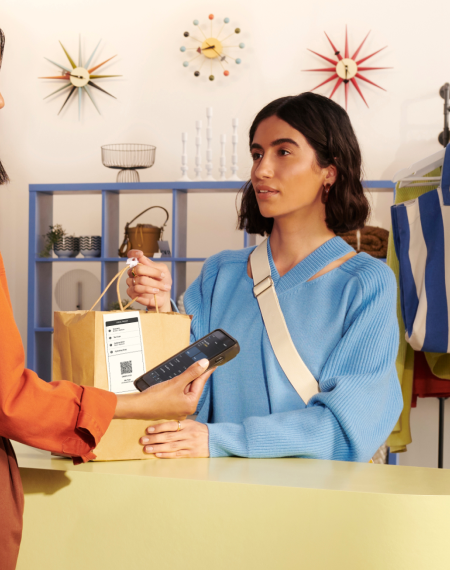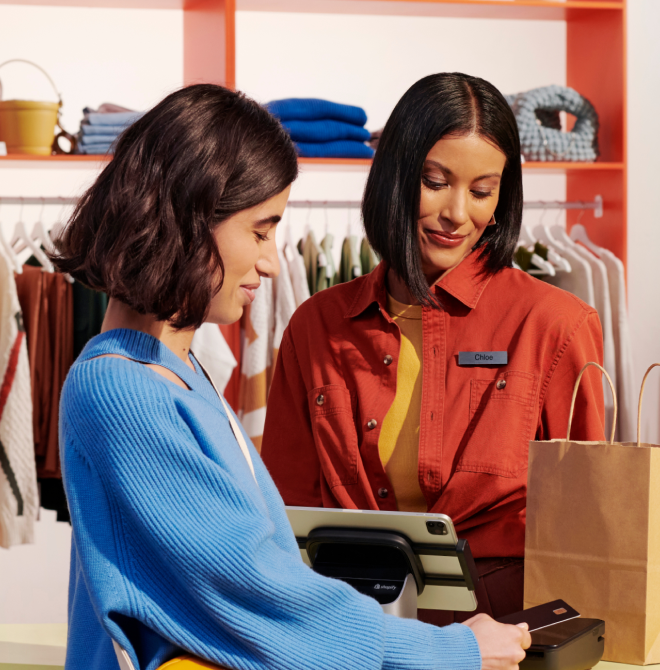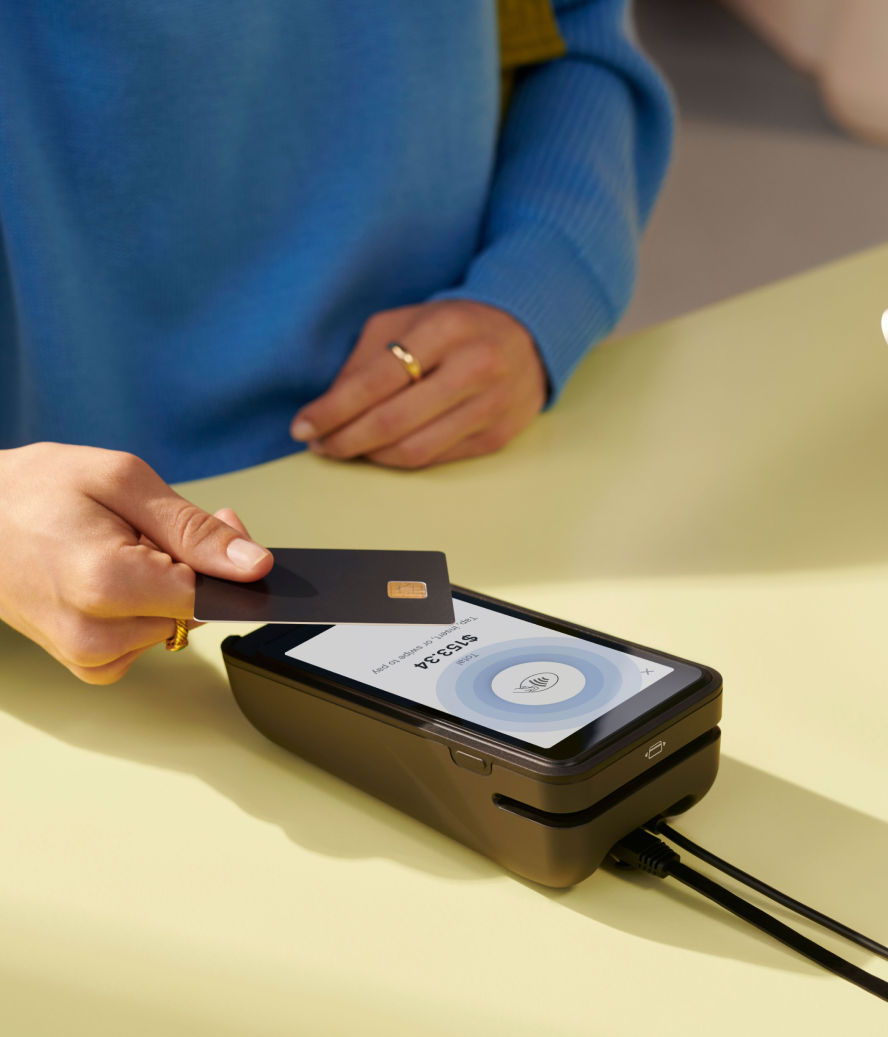As more consumers move between online and offline shopping experiences, omnichannel retail is becoming necessary for modern businesses. An omnichannel approach unifies all sales channels, like physical stores, online platforms, and mobile apps, into one seamless experience.
Connecting these touchpoints helps retailers offer consistent pricing, inventory, and customer service, which leads to higher customer satisfaction and sales. According to EY’s POS Market Report, businesses using Shopify’s unified commerce solution see an average 8.9% increase in annual CMV, along with better operational efficiency.
These seven retailers show how leveraging omnichannel commerce can benefit your entire operation.
1. Mizzen+Main
Mizzen+Main is a menswear retailer that uses performance fabrics to provide stylish and comfortable clothing for men.
Though it began as a digitally native brand, Mizzen+Main has always believed in the power of retail, opening its own retail stores and creating wholesale partnerships with major retailers in the US. Today, the brand has 11 stores (with more on the way) and continues to see consistent growth by offering omnichannel customer experiences.
For example, with Shopify POS, Mizzen+Main unifies customers’ online and in-store purchase history into one profile. Associates use this information to suggest items that match customers’ styles, fit, and past orders. They can also track and apply loyalty points via third-party apps to reward shoppers across channels.
And with tools like Endear (a retail CRM), staff can send personalized messages or promotions. They can target groups of customers, like those who haven’t purchased online for a certain period, and encourage them to come back and shop on any channel they prefer.
“Shopify comes into play a lot in-store, especially for education around sizing. We open a customers’ profile and can see their full purchase history, which helps us make the right recommendations.” —Trey Pritchard, store manager
Shopify’s unified view of inventory also makes it easy for store managers to see what’s available across all channels. If an item is out of stock at one location, associates can use the “ship to customer” feature to send it from another store or the central warehouse directly to the shopper’s doorstep.
Since implementing Shopify POS to power its retail operations, Mizzen+Main has seen notable results:
- Retail revenue grew by 27%, with a 16% increase in retail orders
- Online revenue increased by 15%, accompanied by an 8% growth in online orders
- Their highest lifetime value customers consistently shop across multiple channels
Mizzen+Main continues to see double-digit annual revenue growth across online and in-store channels. The brand credits much of this success to having a centralized platform that syncs every aspect of the business, ecommerce, inventory, loyalty, and in-store sales, under one roof.
2. Venus et Fleur
Venus et Fleur is a luxury floral brand that offers Eternity® flowers, which are real roses that last over a year. The brand started as a solution to a disappointing Valentine’s Day flower delivery, and turned into a sophisticated real operation with a unified commerce approach.
When Venus et Fleur moved from ecommerce into physical retail, it faced two big challenges:
- Managing inventory across different locations and platforms was complex, especially during peak seasons.
- Offering a luxury gifting experience required a holistic customer view, which the brand didn’t have.
Nonetheless, Venus et Fleur brought its entire operation into Shopify. It created one hub to manage its ecommerce, POS, and social commerce data.
Shopify’s API created smooth connections with OMS (order management systems) and ERP (enterprise resource planning) tools. Finally, the brand could capture customer data and use it to personalize the shopping experience across all channels.
To improve the omnichannel customer journey, Venus et Fleur also:
- Rebranded its website with a custom theme for a more elevated look and improved performance
- Integrated Shopify POS so staff could offer personalized promos and access real-time inventory
- Ran Shop App campaigns that resulted in a 15% jump in AOV
Venus et Fleur now has a scalable infrastructure for expansion. It can launch new retail locations or services like buy online, pickup in-store without a complete tech overhaul. And most importantly, provides a luxurious gifting experience that improves customer loyalty and lifetime value.
“Shopify POS has not only contributed to sales growth but also enhanced our ability to build long-term customer relationships, fueling repeat purchases and increasing the impact of our physical retail presence.” —Brendan Gorman, head of ecommerce
👉 Read Venus et Fleur’s story.
3. Monos
Monos is a minimalist luggage brand whose name comes from the Japanese concept of “mono no aware”—the deep appreciation of beauty in fleeting moments. True to its name, Monos focuses on delivering simple and elegant shopping experiences.
Monos began as a digital-native brand with four Shopify-managed online storefronts serving customers worldwide. To deepen customer connections, it decided to open physical stores, looking for a cohesive online-and-offline solution.
The team had heard from peers about inventory discrepancies and mismatched customer profiles when expanding into physical retail. Modern shoppers expect features like in-store returns for online purchases, and associates need a complete view of customer history across all channels.
Monos adopted Shopify POS to unify its online and in-store operations. By using a single platform, Monos created a unified customer experience for shoppers. They could buy online, return in-store, and get personalized service. Sales associates have immediate access to a guest’s complete purchase history.
Some of the most impressive results include:
- 40% year-over-year revenue growth in regions where Monos has a physical store presence
- Reduced POS training time for retail staff to just a half day
- Maintained ecommerce and POS operations with only one employee
Monos found setting up Shopify POS to be straightforward and free of complications. It was "the easiest part of launching the retail store,” says Mike Wu, Monos’s Director of Ecommerce and Customer Experience.
Now, both online and offline channels reflect Monos’ minimalist approach to design and user experience. The brand witnessed a “halo effect” where new brick-and-mortar stores boosted local online traffic and sales.
Future expansion is already in the works, with plans to open new stores in North America and offer services like BOPIS to further scale with Shopify’s omnichannel capabilities.
4. Jenni Kayne
Jenni Kayne began as a California-based fashion brand. Over time, it expanded its product line to include wardrobe accessories, home furnishings, and skincare.
From the start, Jenni Kayne emphasized bridging the digital and physical shopping experiences. The brand recognized that customers often research online before buying in-store (or vice versa), and every touchpoint—from website to retail store—needs to carry a cohesive look, feel, and level of service.
However, as it opened more stores and launched new categories, Jenni Kaye’s existing commerce platform wasn’t enough. Managing online and in-store inventory separately created confusion. Store associates needed clear insight into what was available across locations.
Jenni Kayne decided to migrate to Shopify Plus for ecommerce and integrate Shopify POS in stores to unify sales and operations. This carried a number of benefits:
- Store teams gained quick access to real-time inventory and unified customer data across all locations.
- They can track and tag customers (e.g., “Trade Program,” “Home Membership Program”) so store associates instantly see relevant customer details and personalize service.
- Customers can browse and order large or out-of-stock items right in-store, thanks to the seamless link between the POS and online inventory.
Because customers can take time to consider big-ticket items, the unified system keeps detailed histories and tags that store associates can use to provide knowledgeable follow-ups or suggestions.
With one central platform for commerce, the brand has easily doubled its physical store locations and introduced new product lines without compromising customer experience.
5. RUDSAK
Rudsak, a luxury performance apparel brand with 25 stores across Canada and a flagship in New York City, demonstrates how unified customer data can transform in-store experiences. The brand recognized that true luxury service requires deep customer insights across all shopping channels.
Previously, Rudsak struggled with disconnected customer data between their online and physical stores. Sales associates couldn't easily access online purchase history or customer preferences during in-store interactions, limiting their ability to provide personalized service.
By implementing Shopify POS, Rudsak created a single view of customer data across all channels. This unified approach enables sales associates to:
- Access complete customer profiles showing both online and in-store purchase history
- Deliver personalized interactions, like referencing previous purchases to make relevant recommendations
- Ask specific follow-up questions about past purchases (e.g., "How did you like the black jacket you bought last season?")
- Provide seamless omnichannel services like in-store pickup of online orders
"As a luxury brand, we're not in the business of selling outerwear; we're in the business of acquiring customers," says Rani Hawli, Rudsak's Chief Financial Officer. "It's essential that we provide each customer with a seamless and personal journey at every touchpoint, regardless of location."
The results were significant: transaction times were cut in half, and the brand now captures almost double the customer data compared to their previous system. More importantly, sales associates can now confidently deliver the personalized, luxury shopping experience that Rudsak's customers expect.

6. Offbeat Bikes
Offbeat Bikes is a niche bike shop in Chicago specializing in cargo and electric bikes. The store’s mission is to spread the joy of biking throughout its community. But its former commerce platform hindered that.
Offbeat Bikes struggled to keep inventory consistent between the online store and the physical shop. Online shoppers often encountered out-of-stock items that appeared available on the site—a poor customer experience for such a great brand.
The brand migrated its entire product catalog of 350 SKUs and 2,000 customer profiles to Shopify. The platform’s customization options allowed Offbeat Bikes to showcase detailed product information (like specs, availability, and pricing) in one place. With everything under one roof, if a product sells out in-store, it’s quickly reflected online, reducing overselling and refunds.
The results were also impressive. With Shopify, Offbeat Bikes:
- Increased year-over-year bike accessory sales by 400%
- Increased year-over-year kids’ bike sales by 100%
- Saved over four hours per month on inventory management
Despite the volume of product and customer data, owner Mandalyn Renicker found the migration process straightforward. Shopify’s Help Center and phone support guided Offbeat Bikes through hardware setup and training.
“Shopify allows me to do what I actually care about most, which is making sure my customers are having a great experience when they’re interacting with my shop in any way, whether that’s online or through social media or when they come by in person.” —Mandalyn Renicker, owner
Now, shoppers can seamlessly move from browsing the website to purchasing in the brick-and-mortar shop, giving them the convenience of both worlds. Tools like BOPIS, user-friendly checkout, and detailed product descriptions give small businesses like Offbeat Bikes the same polished, integrated retail experience large brands offer.
7. Tecovas
Texas-based retailer Tecovas sells premium cowboy boots and Western-style apparel. It focuses on providing memorable in-store experiences (think complimentary drinks and boot shines) and easy online shopping.
The brand calls its approach “radical hospitality”. The focus on customer comfort helps Tecovas stand out as an omnichannel retailer that genuinely puts shoppers first.
Tecovas takes advantage of several POS capabilities to unify its operations:
- Split cart: This feature lets customers pay for multiple scenarios, like picking up some items in-store while shipping the rest, in a single transaction.
- RFID inventory management: The brand uses RFID tags instead of standard barcodes to track products with near-perfect accuracy.
- POS UI Extensions: These customizations in the Shopify POS app let Tecovas bring customer details, loyalty data, and promotional workflows right onto the checkout screen.
Tecovas uses these tools to create a frictionless path for how, when, and where customers want to shop. Store associates can access customer details anytime, helping them offer tailored recommendations, apply rewards, or handle special promotions with ease.
With Shopify’s extensible, API-friendly POS system, Tecovas can quickly pivot, roll out new features (like custom discount logic), and bring new store locations online without rebuilding its core infrastructure.
Power your omnichannel retail strategy with Shopify
The underlying theme here is that omnichannel personalization is proactive. Modern technologies like Shopify help unite your tech stack and own first-party data, so you can use it throughout your organization. No more middleware or data silos.
With Shopify, you can also:
- Acquire customers with Shopify Audiences, Shopify Collabs, and Shop Campaigns
- Increase in-store visits with sophisticated workflows designed in Shopify Flow
- Personalize the digital experience with Managed Markets and personalization apps like Nosto
- Increase customer omnichannel loyalty with apps like Smile and Rebuy
Shopify unites data from these partners. All your data updates in real-time, no matter where it's from, so you get a 360-degree view of your customers to customize their shopping experience.
Omnichannel retail examples FAQ
What is an example of omnichannel retailing?
An example of omnichannel retailing is a furniture brand that integrates its physical stores, online store, marketplace sales, and mobile app so customers can buy, browse, and return anywhere. A unified approach provides consistent data, promotions, and customer service across every channel.
Is Walmart an omnichannel retailer?
Yes, Walmart provides in-store shopping, an online platform, and a mobile app that lets customers shop however they prefer. It also offers grocery pickup and delivery services to create a unified experience.
Is Costco an omnichannel retailer?
Costco maintains physical warehouse stores and an online channel, but its digital integration is less extensive than other big retailers. While you can shop online, its overall omnichannel approach remains more limited.
Is Target an omnichannel retailer?
Yes, Target offers omnichannel retail experiences through in-store shopping, curbside pickup, and online ordering. Customers can also order same-day delivery through services like Shipt.





